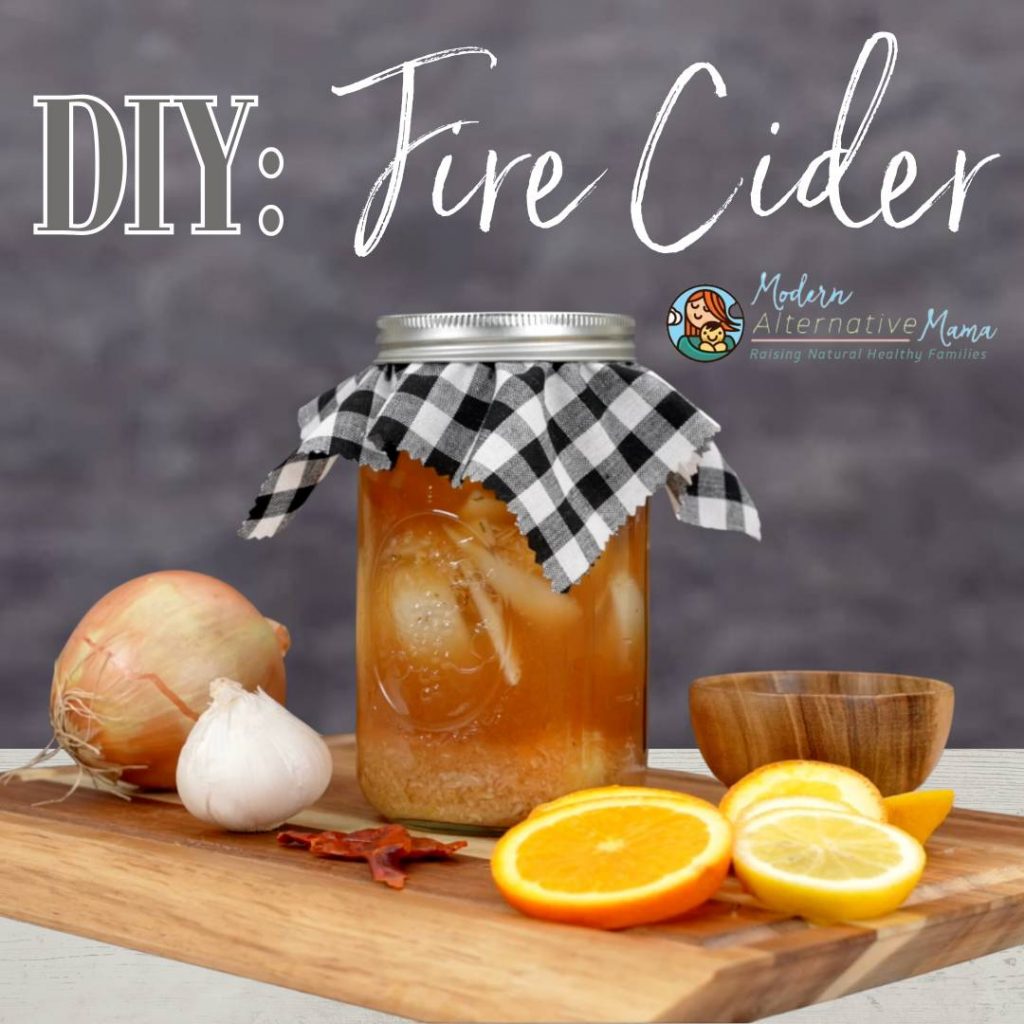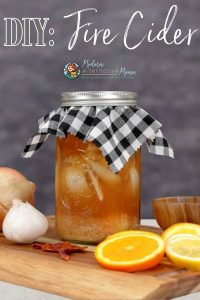Written by Tim Boston
If you are familiar with herbs, you are probably aware that symptoms can be divided into hot, cold, wet, or dry. Herbs will either heat or cool the body, and they will also either add or take moisture from the body. Unsurprisingly, the illnesses that go around during the winter are considered “cold” symptoms. It should be easy to remember that the common cold is a “cold” symptom. It is also a wet symptom. You can tell this from all the body’s mucus production as a response.
You would want warming and drying herbs for these cold and wet symptoms. Few things are hotter or more drying than fire cider. As the name implies, this packs a major blast of heat. This can be used daily to support the body’s immune system during the cold time of the year, and it can also be used during illness to support the body’s recovery. Even if you are so congested that you can barely taste it, you probably will be able to feel the heat from this!
About Fire Cider
The great thing about this recipe is how truly simple it is. I am trying to think of how one could mess it up. I think it is nearly impossible. The exact measurements are not important. The exact time that you leave it sitting is not important. You basically dump all the ingredients in a jar, cover it with apple cider vinegar, wait a month, and you are done.
If you want, you can leave everything in the jar, but it will eventually begin to sludge from sitting too long. The simplest thing to do is just strain it after about a month. Then, you can add honey to taste.
There are countless variations of this recipe. You could add other herbs if you wanted. You could use fresh herbs (preferred), or you could use dried herbs. As is commonly said, the best herb is the herb you have on hand. It is almost impossible to discuss fire cider without mentioning herbalist Rosemary Gladstar, who popularized fire cider in the US and has written an entire book based on this remedy. This recipe is based on one of hers. Feel free to customize this recipe and change the proportions to your liking. The idea is to make a vinegar extraction loaded with heat to support the body through these “cold” symptoms common during the cold months.
The exact amount of each of these ingredients is not important. The general ratio by volume is 1 part horseradish, 1 part garlic, 1 part onion, and ½ part ginger. You can up the amount of cayenne pepper if you tolerate heat better. However, ½ tsp of cayenne pepper in a quart-sized jar will yield a very spicy vinegar. Some people will add jalapenos, lemon (zest, peel, or whole), rosemary, turmeric, or other herbs. You can add whatever you want to this base recipe.
Fire Cider
Ingredients:
- 1 horseradish root
- 2 heads of garlic
- 1 large onion
- 1 ginger rhizome
- ½ tsp. cayenne pepper
- Apple cider vinegar to cover (learn how to make homemade apple cider vinegar)
- Optional add-ins that can help:
- A few slices of oranges and lemons for vitamin C
- 1 tbsp. of rosemary for antibacterial properties
Directions:
Step 1: Peel horseradish, garlic, onion and ginger.
Step 2: Cut or grate the ingredients. Smaller pieces will infuse the vinegar quicker, with grated ingredients being the fastest.
Step 3: Put the ingredients in a quart-sized jar and add the cayenne pepper. Cover with apple cider vinegar. Add the citrus and rosemary.
Step 4: Shake the jar and leave it out of direct sunlight for about one month. Mark the date on your calendar so you don’t forget.
Step 5: After a month, strain and add honey to taste. Drinking an ounce or so a day is a good place to start.




Hi! I just strained and jarred up my first batch of fire cider; now I’m wondering where to keep it – cupboard/countertop or fridge? Thanks!
Per the author Tim: On the countertop or even cupboard is where to keep it. In the fridge is fine, but it will ferment more slowly then.
Very interested.
Hi there, I have been making fire cider for years and love the process and the product along with all the benefits! This batch, however, the organic garlic I put in have turned blue. This has never happened before. I know garlic can be highly prone to botulism. What are your thoughts?
My ingredient list for reference:
Garlic, ginger, onion, jalepeno, tumeric, habanero, lemon, orange peel, rosemary sprig. All organic.
Thanks for your thoughts,
Adrienne
How long is this good for once opening the jar?
Hi, thank you for the recipe! How long is fire cider good for? Thanks!